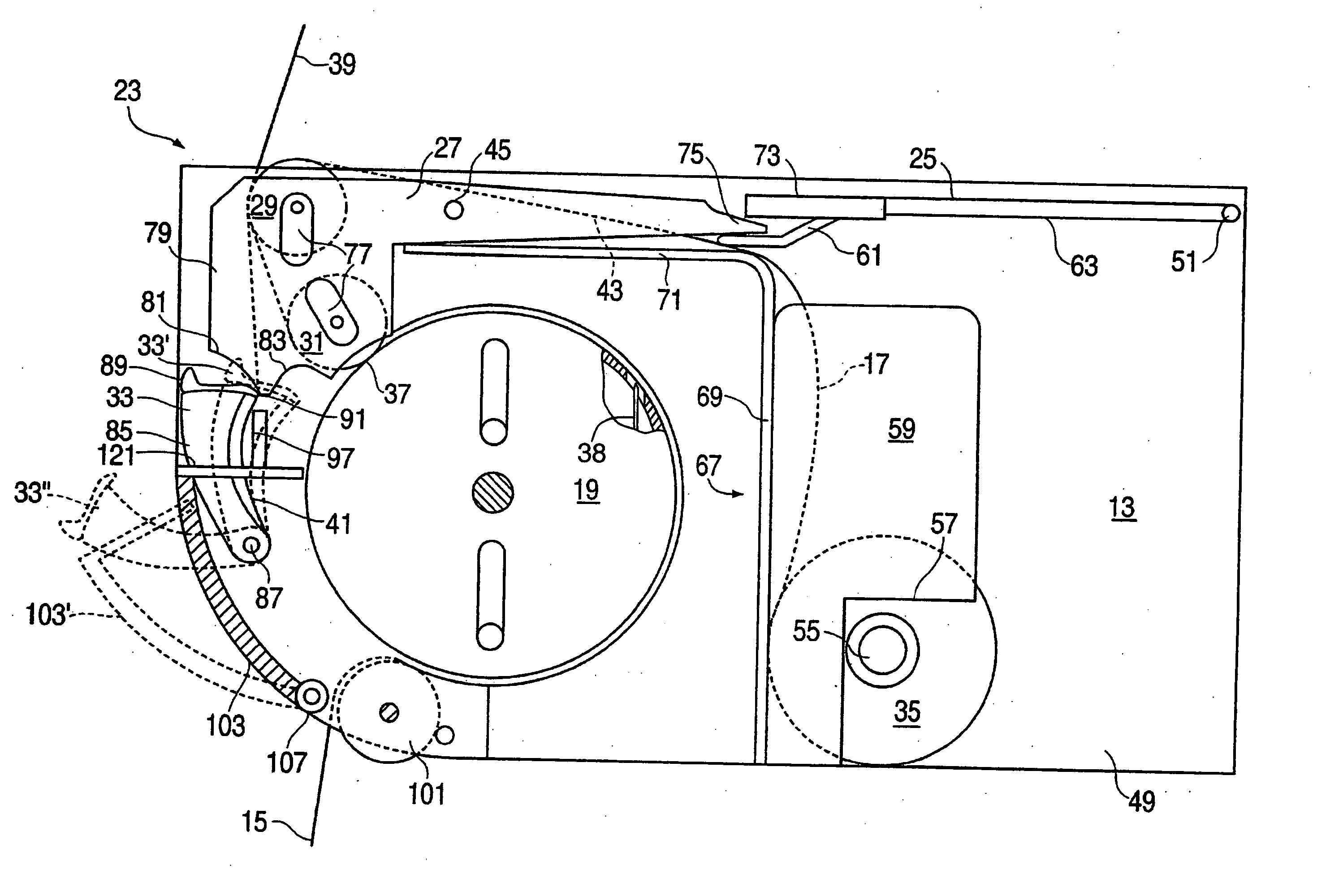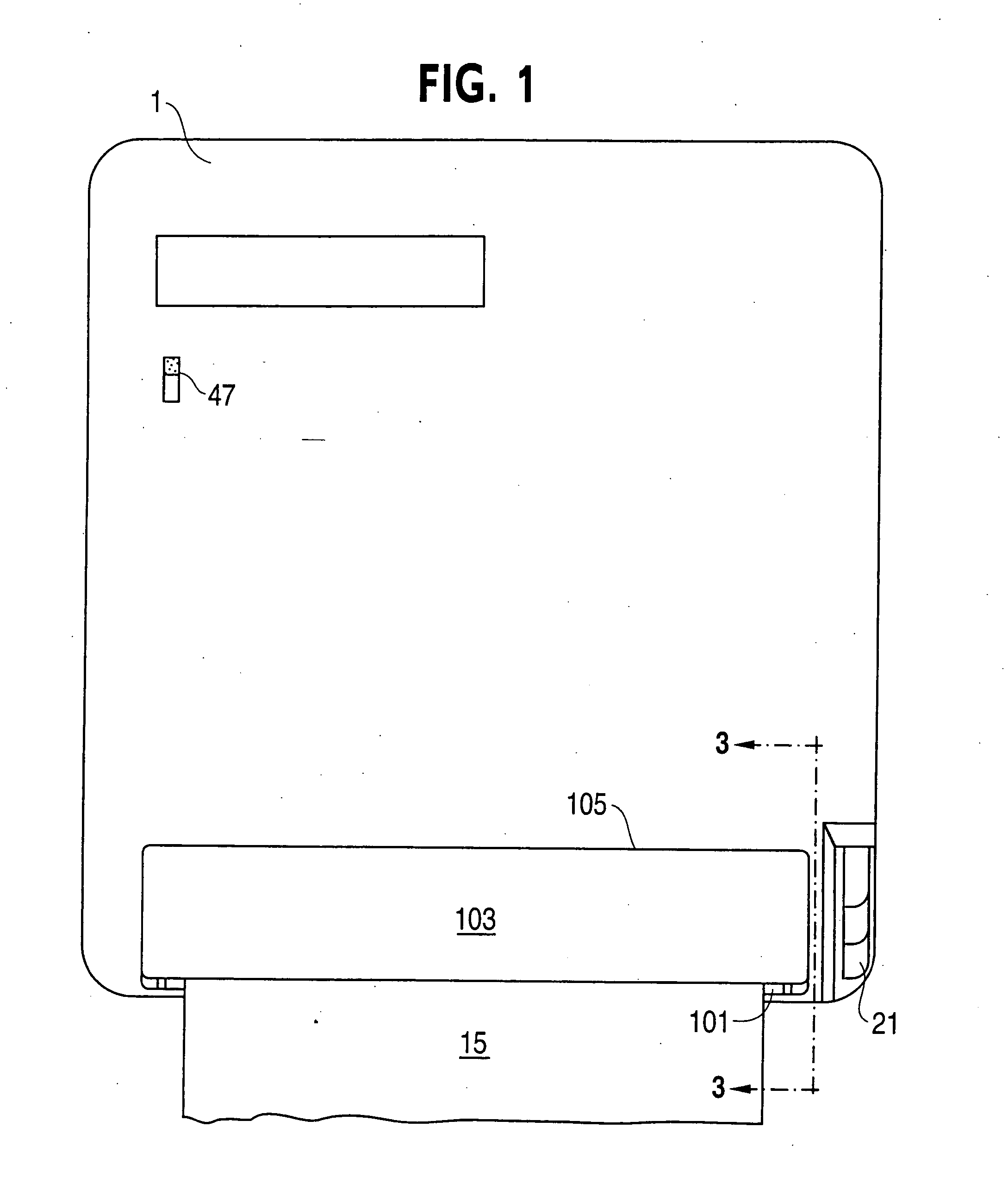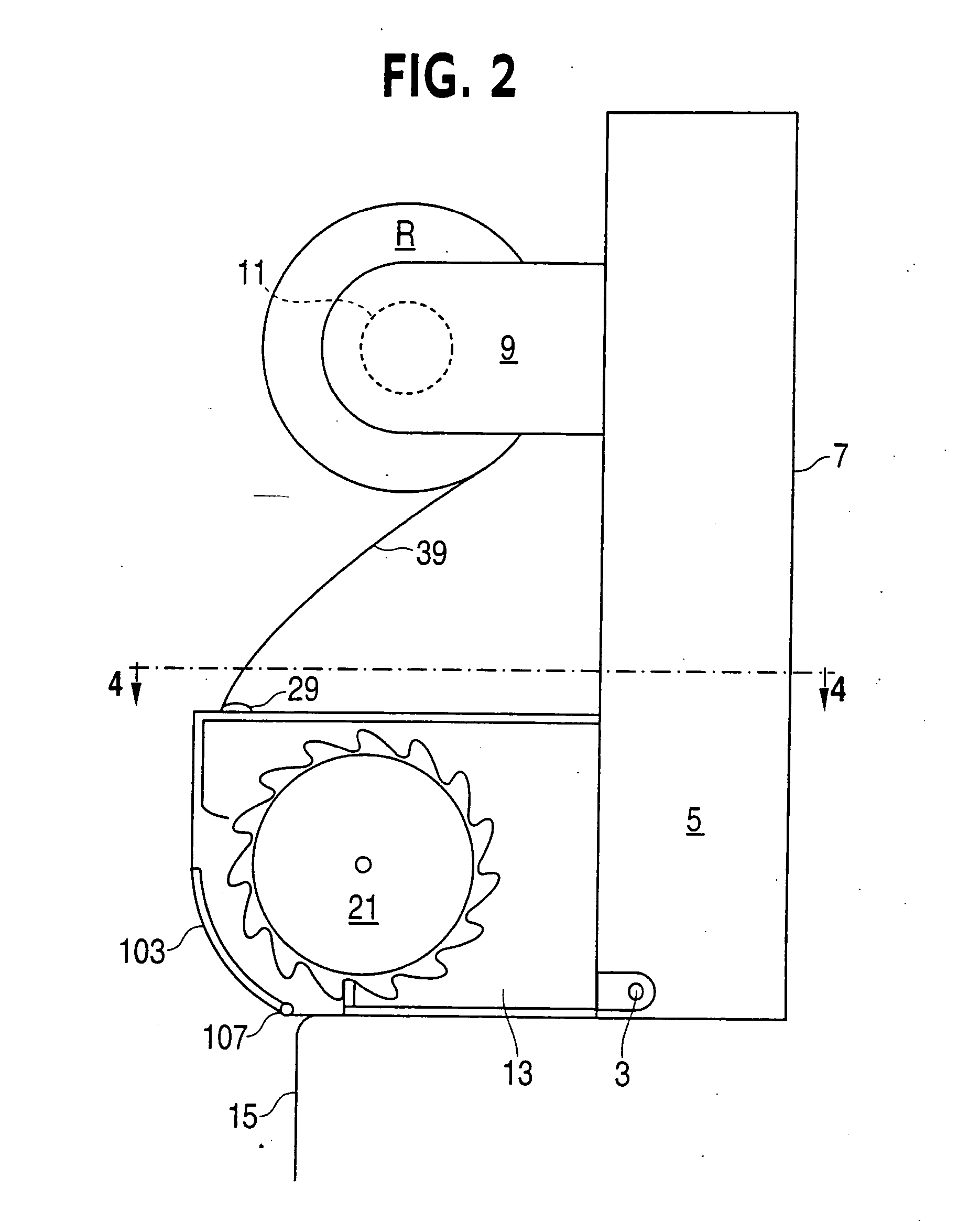Web transfer mechanism for flexible sheet dispenser
- Summary
- Abstract
- Description
- Claims
- Application Information
AI Technical Summary
Benefits of technology
Problems solved by technology
Method used
Image
Examples
Embodiment Construction
[0030] Referring to FIGS. 1 and 2, it is seen that a dispenser in accordance with the present invention may employ a generally conventional-style exterior dispenser cabinet, e.g., the type used in the commercially available Georgia-Pacific P-12 dispenser. The cabinet shown includes a five-sided cover 1 that is pivotally mounted, at a pivot point 3 (see FIG. 2), to a relatively shallow tray-like base member 5. Base member 5 has a back wall 7 with appropriate openings (not shown) to accommodate fasteners for attachment of the dispenser to a wall.
[0031] A reserve roll R of flexible sheet material, such as paper toweling, may be suitably supported between a pair of cantilever mounted wing members 9 extending from the inside surface of back wall 7. Each wing member carries a cup 11 at its free end, which enters into the opposite ends of the core of reserve roll R. The mounting of reserve roll R within the dispenser housing is conventional, and thus no further discussion of this structur...
PUM
| Property | Measurement | Unit |
|---|---|---|
| Flexibility | aaaaa | aaaaa |
| Proximity effect | aaaaa | aaaaa |
Abstract
Description
Claims
Application Information
 Login to View More
Login to View More - R&D
- Intellectual Property
- Life Sciences
- Materials
- Tech Scout
- Unparalleled Data Quality
- Higher Quality Content
- 60% Fewer Hallucinations
Browse by: Latest US Patents, China's latest patents, Technical Efficacy Thesaurus, Application Domain, Technology Topic, Popular Technical Reports.
© 2025 PatSnap. All rights reserved.Legal|Privacy policy|Modern Slavery Act Transparency Statement|Sitemap|About US| Contact US: help@patsnap.com



